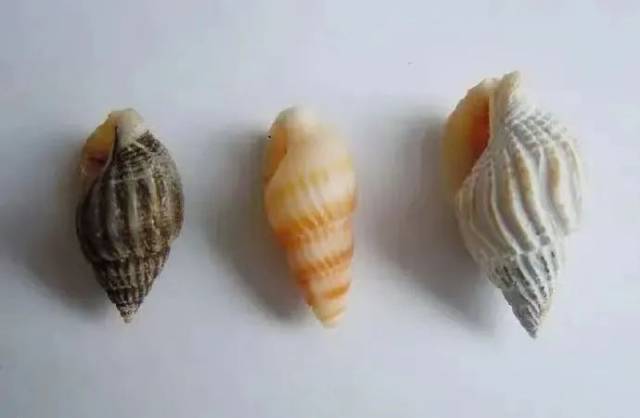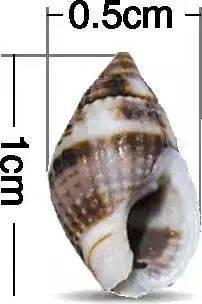Eating rice noodles for breakfast and aquatic snails for midnight snack may be the temptation that every foodie in Guangdong can't resist.
However, not all aquatic snails can be eaten, and some rice noodles can be deadly if not handled properly.
Please pay attention to these foods and avoid food poisoning!
NASSARIIDAE

Nassarius snails are prohibited from sale and consumption in China, and the toxins they contain cannot be decomposed by processing methods such as heating, salting, and solar radiation. Eating a small one may be lethal, and there is no effective medicine to cure nassarius snail poisoning.
The Nassariidae, common name nassa mud snails or dog whelks, are small to medium-sized sea snails. The snails mostly inhabit the southeastern coastal areas including Zhejiang, Fujian, and Guangdong provinces in China. Their shape features cuspate tails and a slim body, about 1 cm long and 0.5 cm wide. They usually live near offshore reefs and on the bottom of sand.

Along China's southeast coast, there are up to 20 common types of nassarius snails, which can be divided into 3 categories according to their toxicity.
1. Toxic nassarius snails
The toxic ones are mainly Nassarius dorsatus, Niotha livescens, and Nassarius hepaticus. The first two kinds are poisonous all year round, and with a high level of toxin, while the toxin level of the last one is relatively low in most cases.
2. Non-toxic nassarius snails
The common non-toxic ones are Nassarius variciferus, Nassarius dealbatus, and Nassarius thersites. So far, no toxicity or positioning has been detected or reported.

3. Seasonal toxic nassarius snails
They are mainly Nassarius conoidalis, Nassarius siquijorensis, Nassarius semiplicatus, Nassarius succinctus, Nassarius papillosus, Zeuxis castus, Nassarius sufflatus, and Nassarius glans. Although they are non-toxic in most cases, they are sometimes poisonous due to different seasons and habitats. There are also reports of poisoning due to consumption of these nassarius snails in China.

Nassarius snails are a hundred times more toxic than arsenic. Due to the pollution of the marine environment, the frequent "red tides" have greatly increased the toxicity of the snail. After testing, even a small one was found to be potentially fatal.
People who are poisoned by nassarius snails will develop such early symptoms as numb lips, tongue, and fingertips, as well as blepharoptosis which means loss of control of the eyelids.
Not long afterward gastrointestinal symptoms will appear and then neurological symptoms such as acroanesthesia, limb weakness, or muscle paralysis.
Severe cases may develop paralysis, alalia, a loss of speech, some degree of hoarseness, skin discoloration, known as cyanosis, dyspnea or air hunger, obnubilation which is indicated by a lack of mental aclarity, sometimes feeling like a cloudyness, shock, and finally death due to respiratory and circulatory failure.
WET RICE NOODLES & TREE FUNGUS
Apart from not eating nassarius snails, you should also pay more attention when eating wet rice noodles and tree fungus.
Recently, the frequent rainfalls in Guangdong have led to rising humidity due to increasing temperature.
Fermented food, tremella and tree fungus are susceptible to the bacterium pseudomonas cocovenenans in such weather conditions and produce a respiratory toxin, the bongkrekic acid which is a respiratory toxin, especially for wet rice noodles products, including:
wet rice noodles, Hefen (flat rice noodles), Changfen (rice noodle roll), Chencunfen, Laifen (Thick Rice Noddles), and Liangpi.
The toxic features of bongkrekic acid are as follows:
1. High degree of toxicity: ingress will cause serious damage to important organs in the human body, including liver, kidney, heart, and brain.
2. High fatality rate: currently, there is no specific antidote for bongkrekic acid. The fatality rate can reach over 40 percent.
3. High temperature resistance: even when boiling it with 100 degrees Celsius of water or steaming it with a pressure cooker will not decompose its toxicity.
In this regard, the Guangdong Administration for Market Regulation has recently issued a special reminder:
Food business operators must strictly shoulder responsibility of safeguarding the procedures of food procurement, storage, and sales.
Consumers should choose proper channels to purchase wet rice noodles. Before eating, it’s suggested to carefully read the product label, and check the expiration date. Once suspicious symptoms appear, please seek medical treatment immediately.
Tips on how to prevent bongkrekic acid poisoning:
1. Do not make or eat fermented noodles such as Suantangzi, thick noodles made from fermented corn flour.
2. Do not eat black fungus that have been soaked overnight.
3. Buy fresh, recently-produced food.
4. Choose small packages when buying food and do not hoard food.
5. Protect food in a cool, dry, and ventilated environment, away from exposure to direct sunlight.
6. Discard moldy food when you find it. Don’t wash or remove the moldy part and continue to eat it.
Author | Hannah, Krystal (intern)
Editor | Wing, Olivia, Will, Jerry
Source | On the Spot, Guangdong Info, Guangzhou Info, Nanfang Daily






